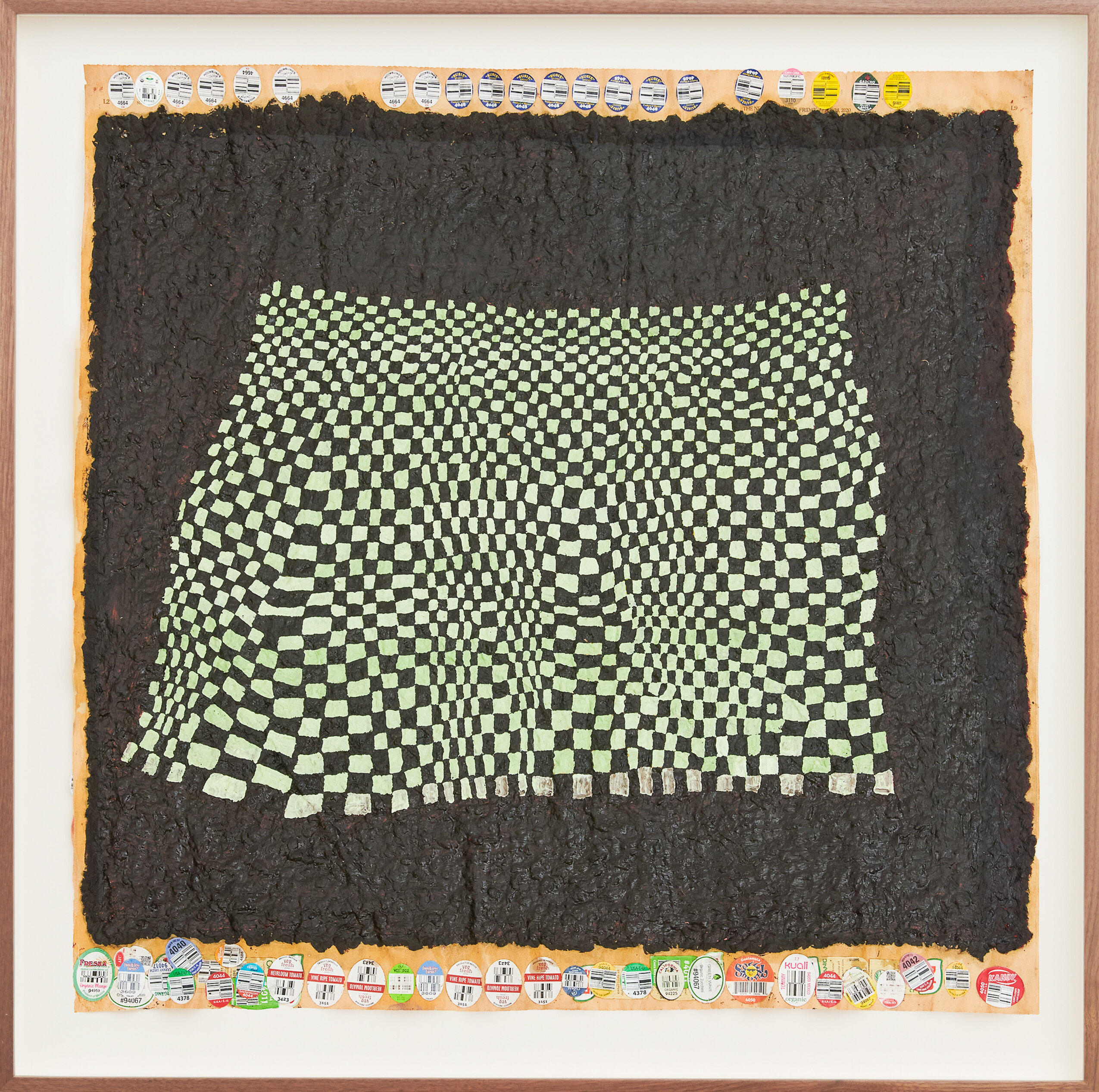About the artwork:
Maxine’s works on paper consist of newspapers blended into pulp and added to the front page of The New York Times and the Los Angeles Times. Through this direct erasure of the news media, Maxine presents an alternative to the cycles of anxiety, trauma and fear created by the daily reportage—replacing them with mandala-like paintings that provide space for reflection and calm.
Maxine's process-based practice addresses trauma, oppression and labor as they relate to personal and collective experiences. The tactile nature of the artist's two-dimensional work lands somewhere between painting and sculpture—exploring the dichotomy between flat and dimensional, rough and smooth.
About the artist:
Magnus Maxine explores the dichotomy between the flat and the dimensional, the rough and the smooth in her quilts and paintings. The artist’s process-based practice addresses trauma, oppression and labor in relation to personal and collective experiences. Maxine’s conceptual work employs an introspective visual language that is ambitiously in conversation with her historical counterparts.
Magnus Maxine was born in Juneau, Alaska in 1985. The artist received a BFA from the California Institute of the Arts in Santa Clarita, California in 2013.
A solo exhibition of Maxine’s work, The Mind is Kind: Dipped, Died, Dried, Machine Pieced & Tied, took place at Stanley’s in Los Angeles, California in 2021.
Group exhibitions that have shown Maxine’s work have taken place at: Court Space Chevy Chase Recreation Center in Los Angeles, California; Crying Clover in Los Angeles, California; Jace Space in Los Angeles, California; Panel Gallery in Los Angeles, California; and the Rundgang der Universität der Künste in Berlin, Germany; among others.
Maxine has published several books, including Arise In Your Might And Protest This Damnable Outrage with Self Press in 2017.
Maxine lives and works in Pasadena, California.






